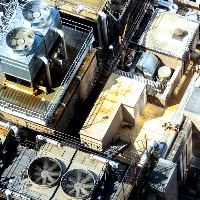(BRUSSELS) – The EU Council gave its green light Monday to two regulations that strengthen rules on the use of fluorinated gases and ozone-depleting substances that cause global warming.
Fluorinated gases (F-gases) and ozone-depleting substances (ODS) currently represent over 3 per cent of the EU’s total greenhouse gas (GHG) emissions. The endorsement is seen as an important step towards reaching EU 2030 climate goals and climate neutrality by 2050; The additional 500 million tonnes of CO2-equivalent emissions that it will eliminate by 2050 is comparable to the combined annual emissions of France and Belgium.
The new rules will eliminate the use of hydrofluorocarbons (HFCs) – the most common F-gases – by 2050. Under the new regulations, the existing quota levels have been significantly reduced, further limiting imports and production of HFCs year-on-year. By 2030 HFCs placed on the market in the EU will be phased down by 95% below 2015 levels, and will be completely phased out by mid-century.
The rules will also restrict the use of all F-gases in equipment where climate-friendly alternatives are available, such as heat pumps, switchgear for energy transmission or products used in the health sector. New obligations will also reduce F-gas and ODS emissions from insulation foams in old buildings and those under renovation.
To stimulate exports of climate-friendly equipment and ensure harmful products are not put on the global market, the new measures on F-gases will ensure that obsolete equipment using refrigerants with a high global warming potential may not be exported from the EU.
The agreement is meant to send a clear signal to manufacturers of products that traditionally use F-gases to steer their investments towards climate-friendly alternatives wherever feasible. This is expected to stimulate innovation and the development of clean technologies. Prices are also expected to come down as the market for climate-friendly equipment expands, and the new equipment will typically lead to more energy savings from higher energy efficiency over the products’ lifetime.
New measures to better enforce these rules and monitor the market will facilitate customs and surveillance authorities to control imports and exports, and crack down on the illegal trade of gases and related equipment.
The two regulations will now be signed by the Council and the European Parliament. They will then be published in the EU’s Official Journal and enter into force 20 days later.



